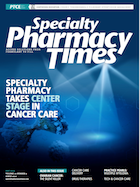Can Newly Proposed Rebate Rule Help With High Oncology Prescription Drug Costs?
On February 6, 2019, the Department of Health and Human Services (HHS) proposed a rebate rule, Fraud and Abuse; Removal of Safe Harbor Protection for Rebates Involving Prescription Pharmaceuticals and Creation of New Safe Harbor Protection for Certain Point-of-Sale Reductions in Price on Prescription Pharmaceuticals and Certain Pharmacy Benefit Manager Service Fees.
On February 6, 2019, the Department of Health and Human Services (HHS) proposed a rebate rule, Fraud and Abuse; Removal of Safe Harbor Protection for Rebates Involving Prescription Pharmaceuticals and Creation of New Safe Harbor Protection for Certain Point-of-Sale Reductions in Price on Prescription Pharmaceuticals and Certain Pharmacy Benefit Manager Service Fees.
This proposed rule is a product of the Trump administration’s viewpoint stated within last year’s American Patients First: The Trump Administration Blueprint to Lower Drug Prices and Reduce Out-of-Pocket Costs. In the blueprint, the administration speaks at length about how rebates contribute to higher prices. This begs the question of whether this new proposed rebate rule can bring down high prescription drug costs witnessed in the oncology industry.
Before we can answer that question, it’s crucial to understand what this rule seeks to accomplish. Essentially, the proposed rule would end the safe harbor provision under the federal antikickback statute for rebates paid to pharmacy benefit managers (PBMs) by manufacturers after the point of sale for a prescription drug. The proposal would also create a new protection aimed at helping patients by giving them a discount at the point of sale.
The HHS proposal would revise the discount safe harbor to exclude price reductions or other remuneration from drug manufacturers to plan sponsors under Medicare Part D, Medicaid managed care organizations, or PBMs that are under contract with them. HHS is also proposing safe harbors that would protect certain point-of-sale reduc- tions for the cost of prescription drugs and that would protect certain PBM service fees.1
What Are Drug Rebates and Where Did They Come From?
Pharmaceutical rebates are discounts that are redeemed after the transaction for a prescription drug has taken place. With drug rebates, the manufacturer pays a rebate to a health plan or PBM in exchange for formulary access. Drug rebates have been used for more than 20 years, mainly to lower the prices of drugs so Medicaid could reduce its costs. The use of rebates by PBMs increased shortly after antitrust litigation in 1996 by pharmacists that challenged the ability of manufacturers to offer up-front discounts. After the court ruled that the discounts violated antitrust law, manufacturers began using rebates in the form that we are accustomed to seeing today.
What Happens After Rebates?
At this point, it is unclear, as the aforementioned rebates have been a staple in our reimbursement system for a while now. Looking theoretically at this proposed rule, it appears that HHS Secretary Alex Azar envisions an alternative system in which plans will negotiate with each manufacturer for an up-front discount price reflected at the pharmacy when the patient fills the prescription. This approach would eliminate rebates and hidden spreads. However, after considering this proposal, there are several questions:
- How will a new system maintain the confidentiality of negotiated prices?
- Will there be more defined and wide-spread use of value-based contracts?
- Will this proposed change negatively affect pharmacies or consumers?
- The proposal to end the safe harbor for rebates could go into effect as early as January 1, 2020. Is this enough time for a plan to transition its reimbursement strategies in time to comply?
- Will the proposal stop these practices by PBMs in the commercial realm?
At this point, we don’t have answers to many of these questions. Perhaps comments on the proposal will bring out the complexities. A question I want to make sure we consider is whether this proposal will have a positive impact on oncology.
I applaud the idea of the proposal, which will hopefully lower drug prices and out-of-pocket costs for patients with cancer who need access to these medications. The idea of helping patients who can directly reap the benefits from discounts is a positive. However, there is a danger that the proposed rule change could cause payers to offset revenue losses by either limiting benefits to stunt higher premiums or increasing consumers’ out- of-pocket costs. To be proactive to this potential problem, CMS issued an April 5, 2019, bulletin that offered plans a 2-year soft landing transition for Medicare Part D plans, which would essentially backstop plan losses resulting from the proposed rule. We are slowly seeing the impact that this rule is having on the commercial market. In December 2018, CVS unveiled its guaranteed net cost pricing model. According to CVS, the model simplifies the financial arrangements underlying PBM contracts and helps plan sponsors deliver savings through cost management strategies, including formulary, utilization management, and performance pharmacy networks. CVS further stated that the model aligns PBM incentives with plan sponsor objectives by providing greater cost predictability.2
In March 2019, UnitedHealth announced that beginning in January 2020, it will only support new business from prospective employer clients that incorporate point-of-sale discounts to consumers as part of their plan design.3
Although the proposed rebate rule does not affect commercial plans, the proposal is causing disruption throughout the system, which could result in new payer policies that have not yet been considered.
I hope that this rule will have a positive impact on the oncology market, as well as other providers in specialty markets that are confronting rapidly rising specialty costs. It will be interesting to see if this proposal results in a more affordable way for patients to access their specialty medications and a more favorable reimbursement environment for specialty providers, like oncologists, and their patients.

